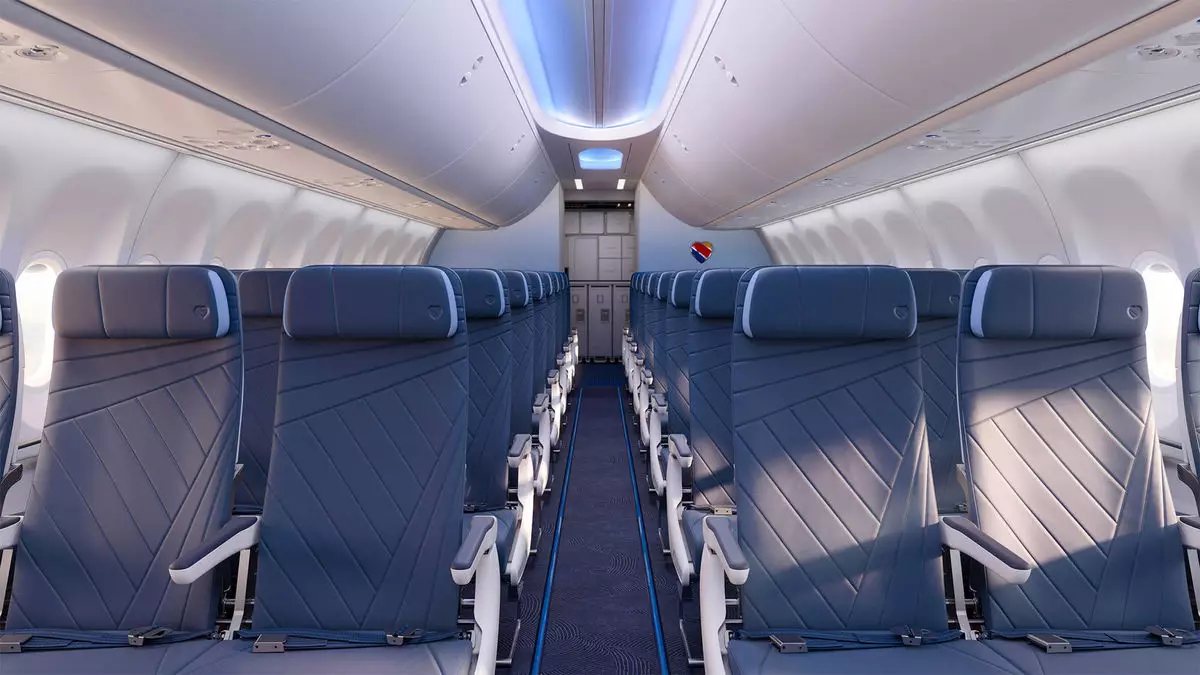Southwest Airlines, known for its open-boarding policy, is set to make a significant change by implementing assigned seats. This move will end the open-seating model that has been a defining feature of the airline. In addition to assigned seats, Southwest will also be redesigning its cabins to include extra-legroom seats, which will make up about one-third of all seats on the aircraft.
The airline is planning to introduce the assigned-seating system sometime in 2025. Details about the seating products, such as cabin layout, the timing of cabin conversions, and the expected incremental revenue, will be shared at an investor day event in September. It is important to note that the cabin reconfigurations will require approval from the Federal Aviation Administration (FAA).
Southwest’s CEO, Bob Jordan, expressed that the shift to assigned seating and offering premium legroom options will bring about a transformational change for the company. Despite the open-seating model being a staple of Southwest since its inception, extensive research has led the airline to believe that this change is necessary for the benefit of its customers, employees, and shareholders. Jordan emphasized that customer and employee feedback will be instrumental in designing a unique experience that only Southwest can deliver.
Southwest’s decision to introduce assigned seating and extra-legroom seats is partly driven by the airline’s underperformance in comparison to its primary competitors, particularly United and Delta. The demand for premium seats post-pandemic has also influenced Southwest’s financial performance negatively in recent years.
Additionally, pressure from activist investment firm Elliott Management, which acquired an 11% stake in the company, has prompted commercial changes within Southwest. Despite calls for leadership changes, CEO Bob Jordan has remained steadfast in his position.
Research conducted by Southwest indicates that over 80% of its current customers and 86% of potential customers prefer an assigned seat. The airline acknowledged that the lack of assigned seating was a significant factor for customers choosing competitors over Southwest. By transitioning to an assigned-seating model, Southwest aims to broaden its appeal and attract more customers.
Apart from the assigned-seating announcement, Southwest also revealed plans to introduce red-eye flights starting on Valentine’s Day in 2025. Tickets for the initial five red-eye flights are already on sale, with routes including Las Vegas-Baltimore, Las Vegas-Orlando, Los Angeles-Baltimore, Nashville-Baltimore, and Phoenix-Baltimore.
In a move towards becoming a 24-hour operation, Southwest intends to gradually incorporate more overnight flights over the next few years. This transformation, coupled with the reduction in turn-time, will allow the airline to implement new capacity without additional expenditure on aircraft. To oversee these new commercial initiatives, Southwest has appointed Ryan Green as the executive vice president of transformation.
Southwest Airlines is embarking on a significant transformation by introducing assigned seating, redesigning cabins, and launching red-eye flights. These changes reflect the airline’s commitment to meeting customer preferences, enhancing its competitive position, and driving financial performance. CEO Bob Jordan’s strategic decisions and the airline’s proactive approach to industry trends signal a new chapter for Southwest.


Napsat komentář